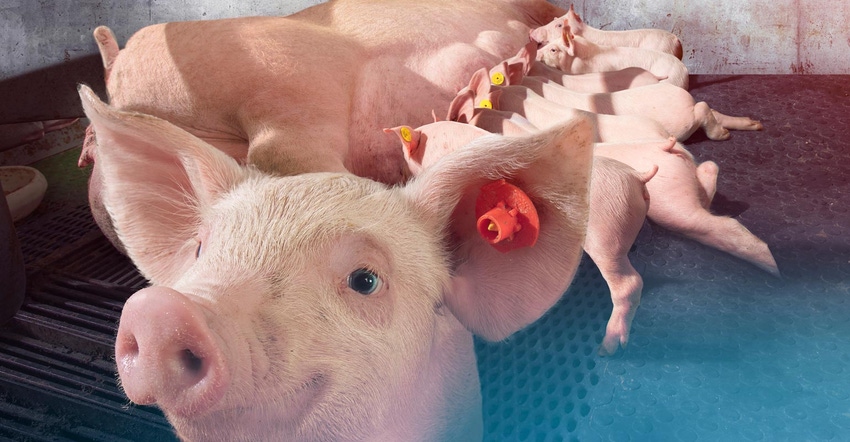Work smarter, not harder to address labor challenges
Labor shortages have challenged pork producers across the country.
November 1, 2019

Sponsored Content
Labor shortages have challenged pork producers across the country. Shrinking populations in rural areas and low unemployment rates have made labor markets more competitive and more costly for pork producers.[1] Meanwhile, economists project that the problem could grow worse, with the number of total farmworkers expected to decrease by 3.4-5.5% in coming years.[2]
Yet, many pork producers must find a way to overcome those statistics. And they must find a way to increase sow and pig performance with minimal labor. Automated and demand-driven farrowing feeding systems can do both. Lactating sows have access to fresh feed 24/7 through automatic pre-scheduled and demand-driven deliveries, boosting sow and pig performance and minimizing labor.
Here, we’ll explore a few ways how.
Less feed waste, less labor, better results
Traditional auger feed delivery systems leave a lot of feed on the table with a one-size-fits-all approach, and it will cost you. First, you have to pay someone to remove all that stale feed. Second, palatability is a crucial driver of feed intake,[3] which determines sow and piglet performance. Finally, feed costs account for up to 70% of pork production costs and reducing waste can help.
Automated and demand-driven farrowing feeding systems eliminate the problem of stale feed. Because the wireless activator is in the bottom of the feeder, sows can only trigger the sensor to ask for additional portions when the feeder is empty. That means little or no feed waste and less labor.
Data monitoring means labor-free oversight
How can you tell if a sow is recovering well from farrowing and producing sufficient milk for her litter? Usually, the answer is to monitor feed intake. But paying an employee to manually check feeders for uneaten feed is an inexact and expensive way to monitor sow health after farrowing.
A farrowing feeding system can collect data on sow eating activity 24/7. When a sow doesn’t ask for feed for a certain time period, software sends an automated alert indicating that a sow could need attention. Activity alerts reduce labor costs and improve sow and pig performance by identifying problems faster.
Use insights to adjust feed plans from anywhere
Many farrowing barn managers calculate feed intake averages with paper and pencil. And, if a sow requires extra feed or a special diet, they spend extra time calculating and catering to her needs. With a farrowing feeding system, feed intake trends for individual sows and the overall herd are available at any time, from anywhere using a smartphone, tablet or computer.
You can adjust strategic feed plans for the entire herd, or individual sows, with the touch of a finger. That means each sow gets exactly what she needs to recover from farrowing and produce milk, and you get total control with less labor.
Visit farrowingfeeding.nedap-livestockmanagement.com to learn more about Nedap Farrowing Feeding with Nedap Activator.
[2] http://nppc.org/loss-of-foreign-workers-would-hurt-agriculture/
About the Author(s)
You May Also Like



